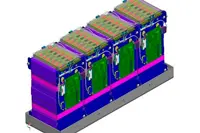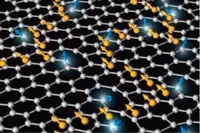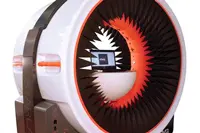Electronics News
Archive : 19 February 2015 год
 Following another funding round, British battery start up Faradion says it has almost £2million to invest in developing low cost, high energy density sodium-ion batteries. The company says the technology has the potential to revolutionise the supply of electric batteries for stationary storage, automotive applications and e-bikes.
Following another funding round, British battery start up Faradion says it has almost £2million to invest in developing low cost, high energy density sodium-ion batteries. The company says the technology has the potential to revolutionise the supply of electric batteries for stationary storage, automotive applications and e-bikes.
"With this latest demonstration of their support, our investors have provided us with the funds necessary to secure success", said Faradion CEO Lawrence Berns. "We can now move forwards quickly to proving and scaling up our solid state low cost batteries and, indeed, intend to demonstrate one in a dynamic environment very soon
Faradion's sodium-ion technology is said to have already shown specific energy densities in full cells in excess of other known sodium-ion materials. In addition, the Faradion team has developed materials with energy densities exceeding those of lithium iron phosphate. According to the company, sodium-ion has an energy density of 700Wh/kg, a specific capacity of 160mAh/g and an average discharge voltage of 3V.
Faradion's technology is being applied within 3Ah prismatic cells, being supplied to Williams Advanced Engineering as part of a project cofunded by Innovate UK (see image, which shows a 48 cell battery pack).
Author
Graham Pitcher
Source: www.newelectronics.co.uk
 Graphene and related materials are being considered as potential replacements for silicon in electronics devices, they are also being researched for solar energy conversion applications. Scientists believe these materials could improve efficiency, reduce production costs and deal with a number of environmental issues.
Graphene and related materials are being considered as potential replacements for silicon in electronics devices, they are also being researched for solar energy conversion applications. Scientists believe these materials could improve efficiency, reduce production costs and deal with a number of environmental issues.
In particular, 2D crystals are seen to have application as catalysts in dye sensitised solar cells, replacing platinum and bringing a reduction in device cost of four orders-of-magnitude.
Now, scientists working with Europe's Graphene Flagship and the Cambridge Graphene Centre have published a review of the potential for graphene and related materials in energy conversion and storage, claiming substantial progress has been made in material preparation at the laboratory level.
"The huge interest in 2D crystals for energy applications comes both from their physico-chemical properties and the possibility of producing and processing them in large quantities, in a cost-effective manner," said Francesco Bonaccorso, a Royal Society Newton Fellow at the Cambridge Graphene Centre. "In this context, the development of functional inks based on 2D crystals is the gateway for the realisation of new generation electrodes in energy storage and conversion devices."
Bonaccorso said the challenge now is to demonstrate a disruptive technology in which 2D materials not only replace traditional electrodes, but also enable whole new device concepts.
"Graphene and related materials have great promise in these areas and the Graphene Flagship has identified energy applications as a key area of investment," said Professor Andrea Ferrari, director of the Cambridge Graphene Centre. "We hope that our critical overview will guide researchers in academia and industry in identifying optimal pathways toward applications and implementation, with an eventual benefit for society as a whole."
Author
Graham Pitcher
Source: www.newelectronics.co.uk
 Netherlands based Antenna Company has installed a StarLab antenna testing system at its Eindhoven design centre. The system will allow it to undertake rapid measurement of ultra wideband and multiband antenna performance during design, prototyping and manufacture.
Netherlands based Antenna Company has installed a StarLab antenna testing system at its Eindhoven design centre. The system will allow it to undertake rapid measurement of ultra wideband and multiband antenna performance during design, prototyping and manufacture.
Dr Diego Caratelli, chief technology officer for Antenna Company, said:"StarLab is a pivotal piece of equipment in the development of our products. Previously, outsourcing our antenna designs for testing was time consuming and expensive. With StarLab, we can achieve rapid and more accurate measurements, meaning that our customers receive a superior quality product in a shorter time frame."
According to supplier Microwave Vision, StarLab can be used for antenna pattern measurements in laboratories and production environments where space is limited and the flexibility of a portable system is required.
Two versions are available: StarLab 6, which spans frequencies from 650MHz to 6GHz; and StarLab 18, suitable for measurement at frequencies from 650MHz to 18GHz.
Author
Graham Pitcher
Source: www.newelectronics.co.uk

